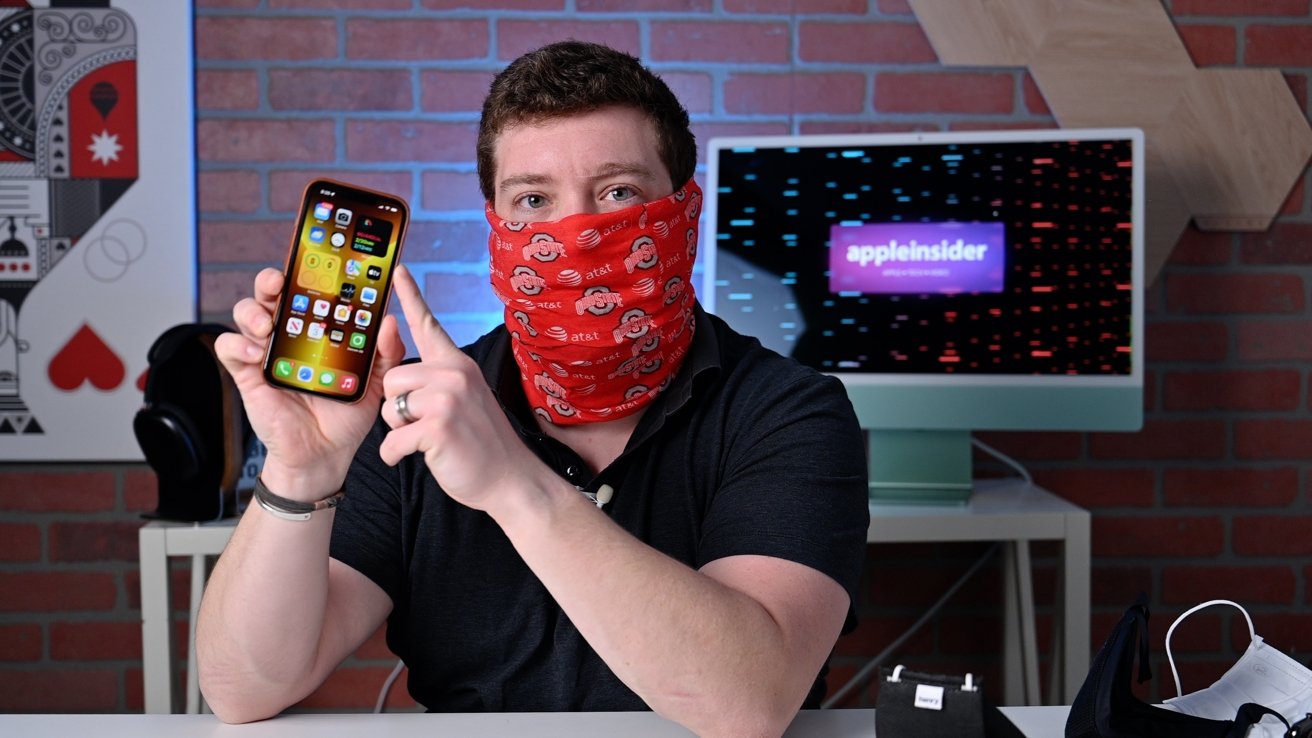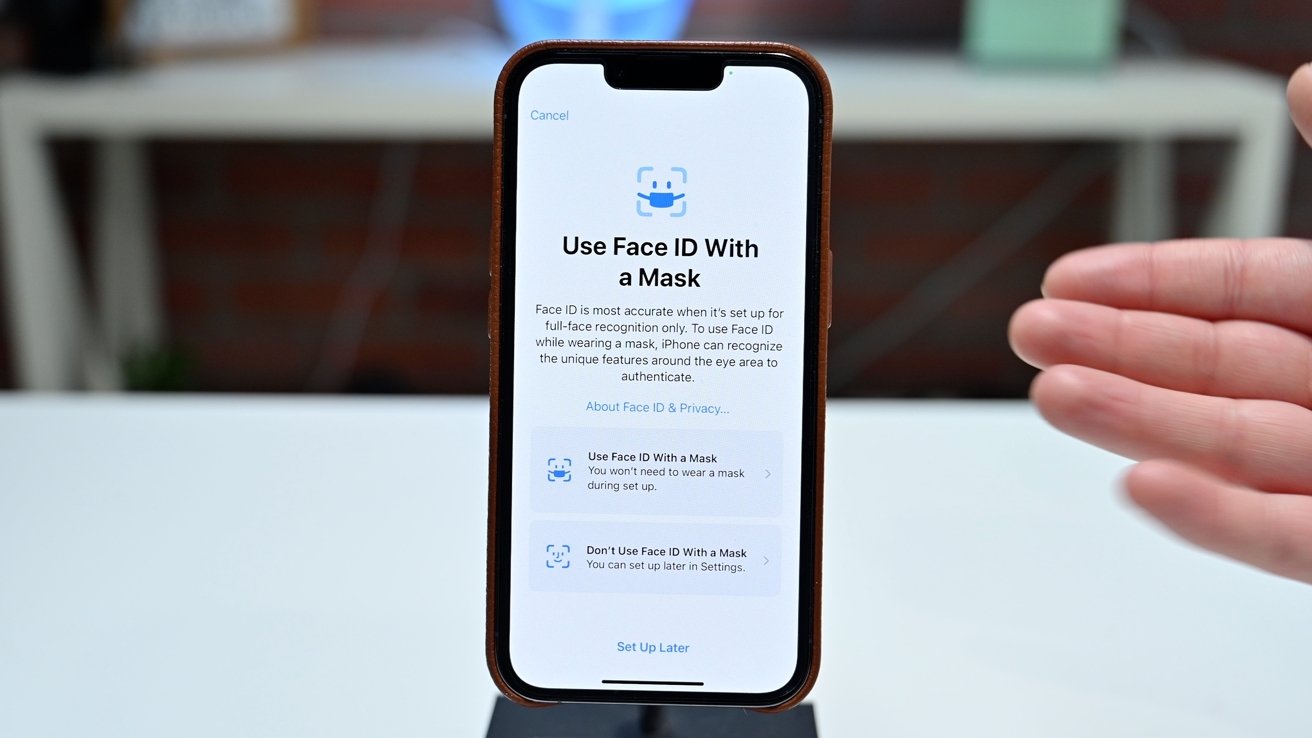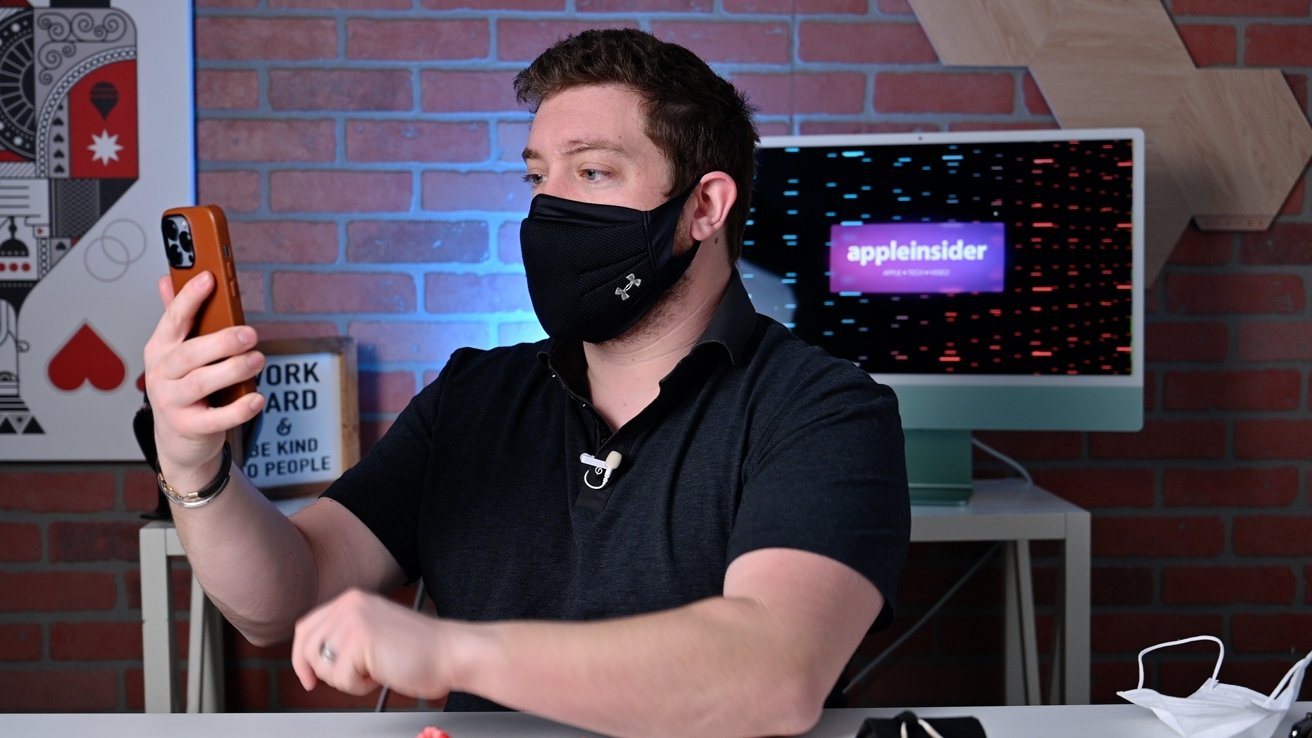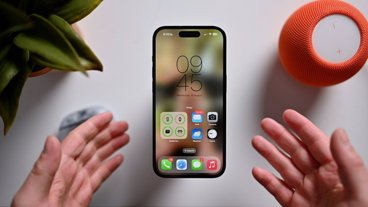In the upcoming iOS 15.4 update, Apple is finally making it possible to unlock your iPhone while wearing a mask while nixing the Apple Watch requirement. Here's how to enable it and how well it performs.
The iOS 14.5 update brought the ability to unlock your iPhone while wearing a mask — assuming you also happened to own an Apple Watch. Face ID would detect you had a mask on, check for an authenticated Apple Watch nearby, then unlock your iPhone.
We've been using this for the past year, and it's been a great way to unlock your iPhone when Face ID is unavailable.
But it had limitations, aside from the Apple Watch. It wouldn't work to make purchases, for example. Apple Pay or other purchases would require your passcode to be entered.
This new iteration allows the phone to be unlocked sans Apple Watch and can even be used to make Apple Pay purchases and access secure apps.
How to set it up
It's quick and easy to enable Face ID while wearing a mask. Once you've updated to iOS 15.4 (currently in beta):
- Head to Settings > Face ID & Passcode
- Then toggle on Use Face ID With a Mask
- Enroll your face in Face ID if you've yet to do so
Now you're set to unlock your iPhone while wearing a mask, without the previously-required Apple Watch.
Security implications & caveats
When using Face ID with a mask, there are some tradeoffs. Face ID works while wearing a mask because rather than scanning your whole face, it scans the area around your eyes.
This limits the scannable area. Apple says it isn't quite as secure as a full-face Face ID scan, but hasn't yet commented on how much.
This will probably be an acceptable compromise for most, but it's something to understand before enabling the feature. Apple's been upfront about this and warns you as you set it up for the first time.
Apple has also limited which iPhone models support the new Face ID with mask feature. Apple says only iPhone 12 and iPhone 13 will work. There's been no specified reason for this limitation, though we have our theories. Apple did upgrade the Face ID module with iPhone 12 to support more angles which could be the differentiator.
If you intend on wearing glasses, you may notice Face ID failing more often than it did without the mask. To help alleviate these hangups, Apple added the ability to add glasses. According to Apple, Face ID should be trained for each pair of glasses you may wear to get the best results.
Sunglasses are not supported. So if you're wearing a mask with sunglasses on, you'll still need to enter your passcode.
Putting it to the test
Since the beta was released, we've updated our testing device to iOS 15.4 to put it to the test. We gathered a collection of masks in varying colors, sizes, and materials to see where the Face ID limitations lie.
We have white KN95 masks, colored KN95 masks, and cloth masks that we tested with. To our delight, every mask was recognized by Face ID and allowed us to unlock using just our eyes. It was shockingly fast.
Even our gator that covered up everything but a bit of our eyes still allowed Face ID to unlock our iPhone.
After putting on glasses, we had it fail at least once before we trained Face ID with the glasses on. Once we did that, no issues at all.
The new update to Face ID is incredibly good and shows that even though it took Apple a while, the update will be well worth it as masks continue to be a part of our lives. Wearing an Apple Watch will still be the more secure option, but now everyone else has an option too.
 Andrew O'Hara
Andrew O'Hara









-m.jpg)






 Thomas Sibilly
Thomas Sibilly
 Wesley Hilliard
Wesley Hilliard
 Marko Zivkovic
Marko Zivkovic

 Malcolm Owen
Malcolm Owen

 Amber Neely
Amber Neely

-xl-m.jpg)








8 Comments
O-H Andrew. Nice.
Interesting report, but how many other people wearing their mask did you give them your phone to see if they could unlock it.
It also works when I’m wearing my CPAP mask! That’s a good thing for me.
I am in Canada and on iOS 15.4 beta and this option to turn on use with mask is not present in my face ID and passcode settings.